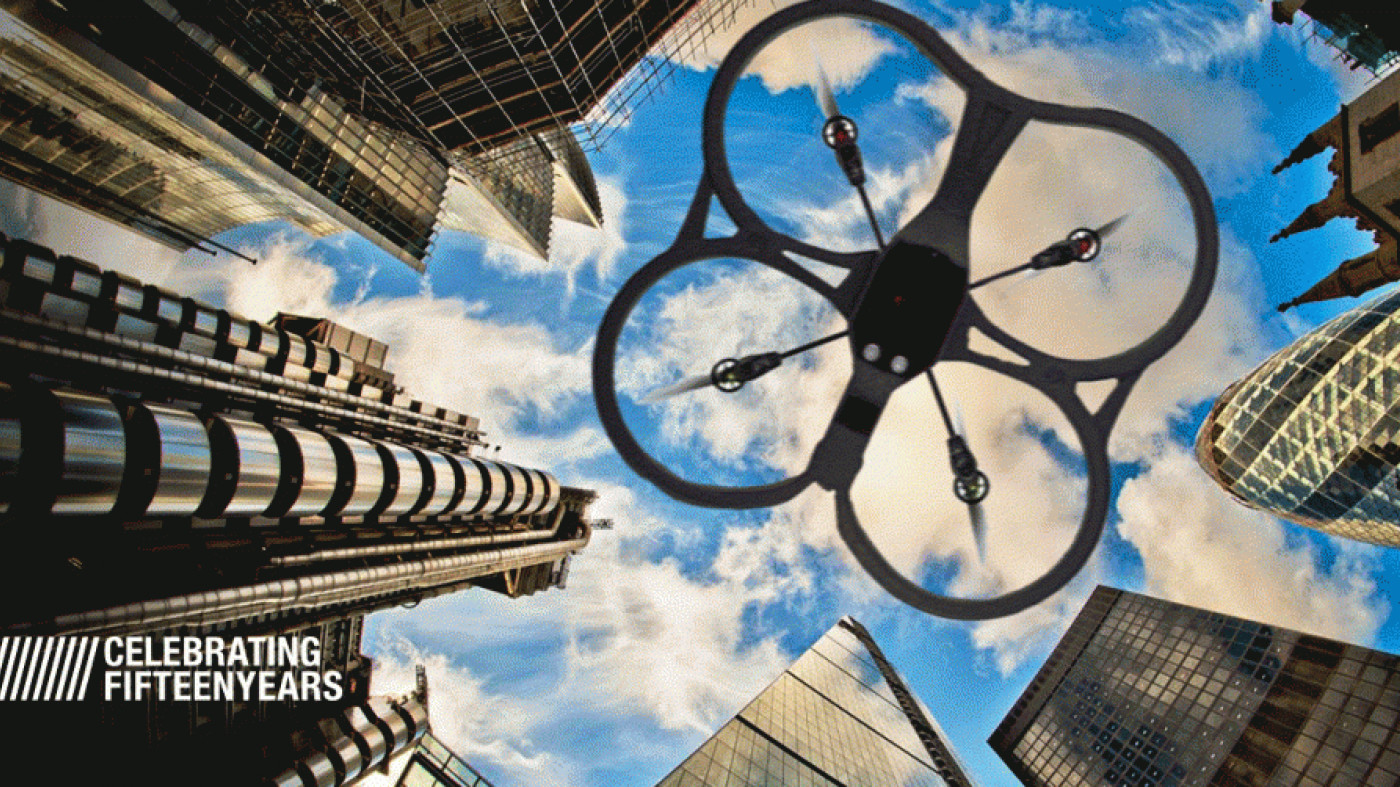Our world is changing at a dramatic speed; new ideas and innovations are proliferating daily across the planet and across all sectors. The question is, which ones will be useful to us in the design sector? In selecting 15 innovations for 2015 I have chosen those that will give real benefit, are being developed to create commercially available products that will have a radical influence on the way we solve problems and the products and environments we create.
There are currently two major influencers on material development. Bioengineering and nanotechnology are opening up vast opportunities for new material creation. Many of the 15 selected here would not have been possible without advances in these two sciences.
The list is not in any particular order either alphabetical or of importance, each presents its own possibilities and opportunities.
1. Photogrammetric and laser survey drones – allowing greater visibility of tall structures
You’re probably thoroughly fed up hearing gizmo geeks droning on about drones, but the gap is closing between the highly sophisticated military UAV’s and the Maplin toys that have been on the wish list of every schoolboy for the past few years.
Drones are now available at a relatively low cost which brings a new dimension to aerial film, photography and surveying. Platform stability, GPS and laser positioning are now so advanced that these new generation drones can be readily adapted for site surveying – something that we do a lot for our clients at Endpoint. Using photogrammetric and laser techniques they are also ideal for low cost surveys of facade and roof layouts of tall buildings all from the safety of ground based operation.
As technology advances and demand grows, further uses for drones will become evident and available. However expect to see government and aviation authorities placing greater restrictions on use as the skies become more crowded.
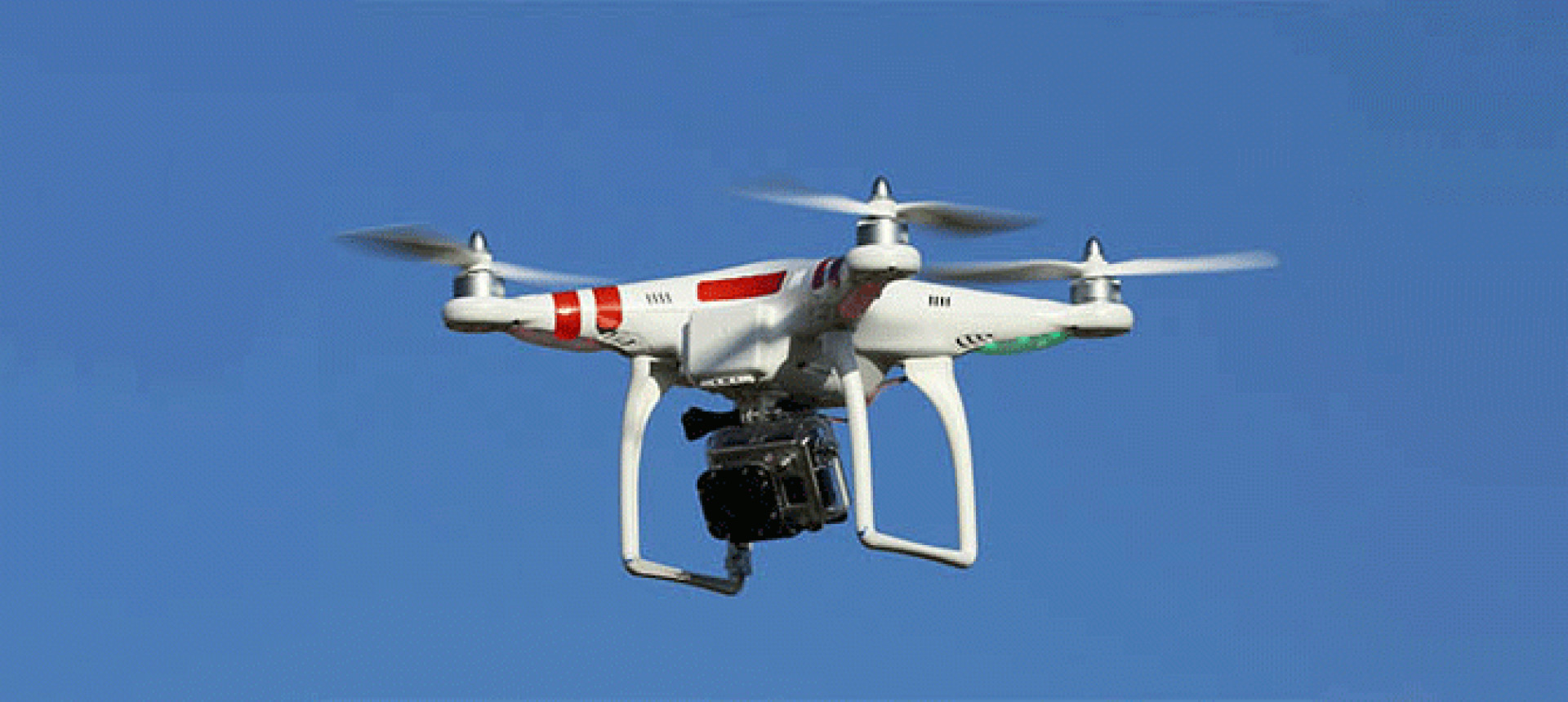
2. Photovoltaic paint coatings – replacing heavy PV panels with a simple spray of paint
Imagine if you could power EV batteries or LED lighting on brand signs from the paint finish? Well, the technology is here and has been developed by experts from the University of Sheffield’s Department of Physics and Astronomy with the University of Cambridge. Together they have created a method of spray-coating a photovoltaic active layer by an air-based process – similar to spraying regular paint from a can. This innovation has enabled development of a cheaper and far more flexible alternative to the heavy photovoltaic panels currently available. This is a product that can be easily mass-produced and applied to a very wide variety of materials and three-dimensional forms.
This innovation is being taken very seriously by Mercedes Benz. It recently unveiled what it claims to be the ultimate in ‘green driving’- a concept car that doubles up as a huge solar panel to generate energy. Using something known as ‘multi-voltaic’ silver paint, the German manufacturer’s Vision G-Code is designed to capture energy from solar rays to power a hybrid engine.
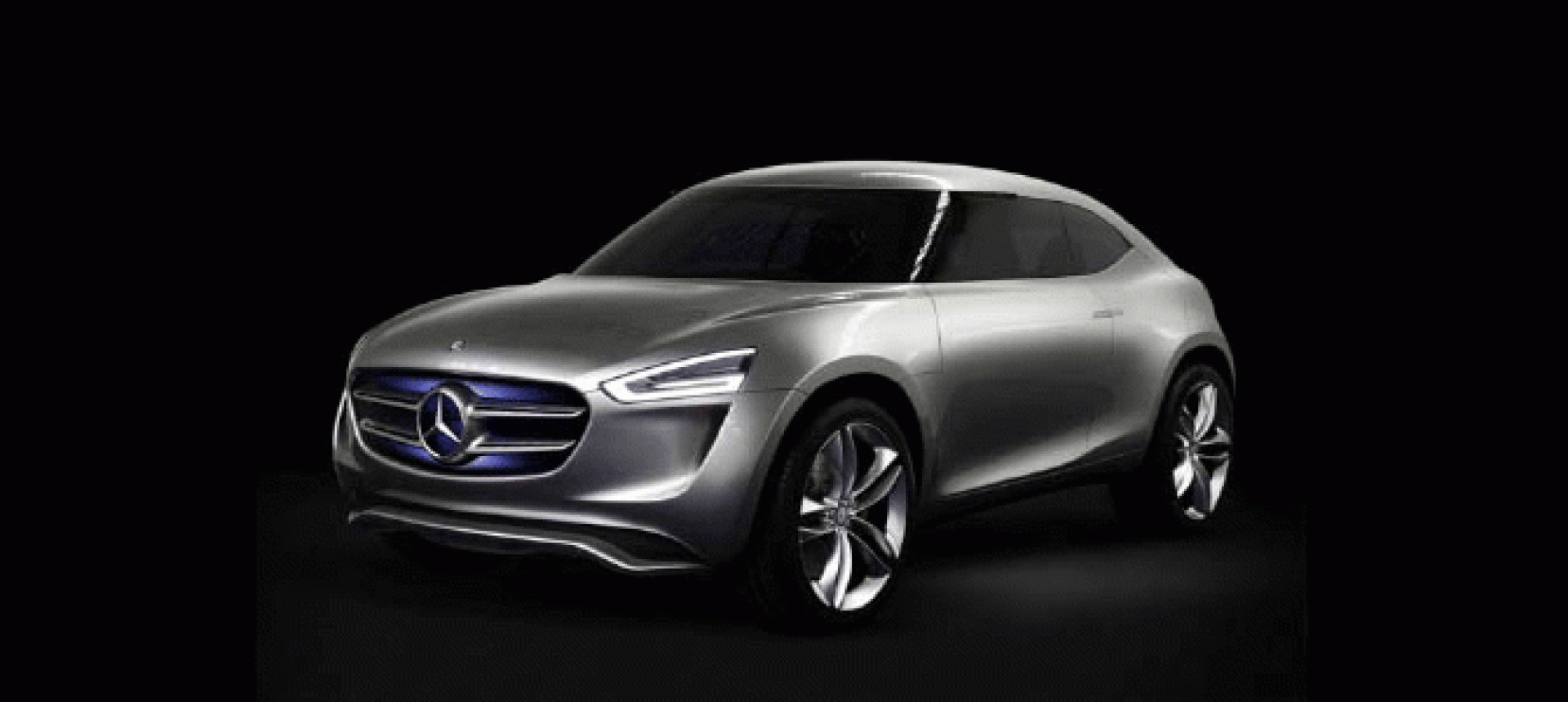
3. Atom-thin Piezoelectrics – wearable energy
Researchers from Columbia Engineering and the Georgia Institute of Technology have made the first experimental observation of piezoelectricity and the piezotronic effect in an atomically thin molybdenum disulfide (MoS2), resulting in a unique electric generator and mechanosensation devices that are optically transparent, extremely light, and very bendable and stretchable.
Piezoelectric generators have been around for some time. But they have never been in a form that can be developed into thin and very flexible materials suitable for creating wearable textiles that can also generate the electric requirements of your smartphones and tablets every time you move.
The potential for developing products using this technology is enormous and could inevitably lead to wearable self-powered computers and garment integrated communication devices. For our branded environment work at Endpoint, we can see its application in piezoelectric brand banners or flags that will provide their own lighting.
4. Carbon nanotubes – enabling new super-lightweight structures
Carbon nanotubes are molecular-scale tubes of graphitic carbon with outstanding properties. They are among the stiffest and strongest fibres known, and have remarkable electronic properties and many other unique characteristics. Commercial applications have been rather slow to develop, primarily because of the high production costs of the best quality nanotubes but they can be combined into very lightweight very high-strength structures e.g. indestructible wind turbines and helicopter rotor blades. Imagine the possibilities of building super-lightweight minimal architectural and engineering structures once the cost of production is reduced. This is truly a material that will radically change our lives as more applications mechanosensation.
5. Amorphous metals – used by Apple but with potential for so many product applications
Amorphous metal (also known as metallic glass or glassy metal) is a solid metallic material, usually an alloy, with a non-crystalline, glass-like disordered atomic structure.
The advantage of amorphous metals is that they can be injection moulded to very high tolerances as their mould shrinkage rate is much lower (max.0.2%) than normal metals. Amorphous metal alloys can be stronger than high strength Titanium and have high-quality corrosion and scratch resistant surface straight from the mould.
Liquidmetal® a company specialising in producing and injection moulding amorphous metal alloys is now part-owned by Apple and is already producing some small parts for the iPhone. Apple’s interest in the company has led to rumours that the next generation iPhone may have an amorphous metal moulded casing.
The opportunities to utilise the attributes of amorphous metals in new products are enormous mechanosensation and we are set to see this technology exploited in many more quality products in the near future.
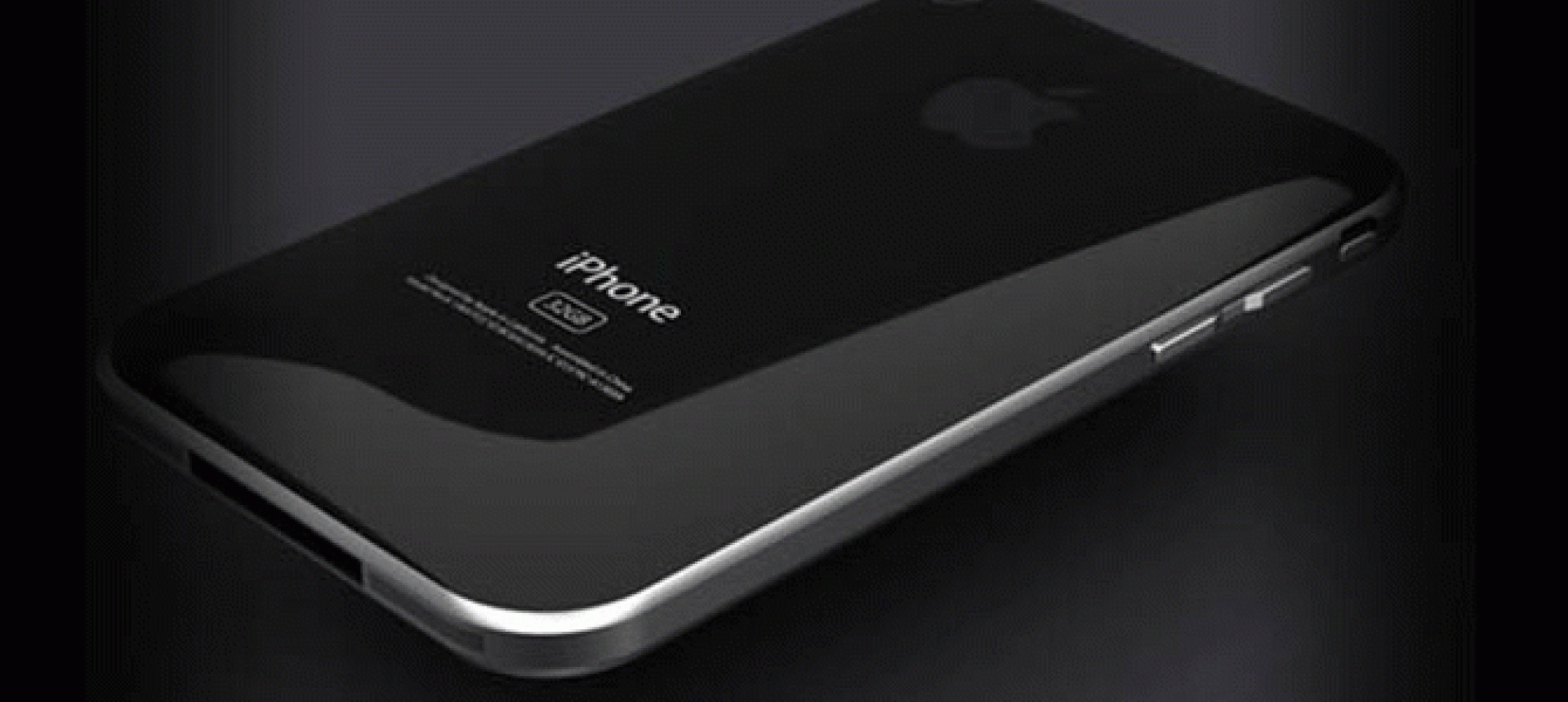
6. Paper thin printed LED lightpaper – infinite possibilities for architecture, signage and illuminated brand applications
For many years the holy grail of lighting has been to produce a thin evenly illuminated light sheet for the architectural interior and signage industries. Electroluminescent sheet showed some promise but had a very short lifecycle and low illumination levels. Now with the invention of ‘Lightpaper’ all that is about to change and to radically alter our industry.
Lightpaper is produced by suspending millions of microscopic (about the size of red blood cells) light emitting diodes in a printable ink medium, which is printed onto a very thin conductive sheet and sandwiched between thin transparent protective coatings. When a low voltage current is applied to the conductive layer the diodes illuminate creating a continuous sheet of light. The product has been developed through its first prototyping by Rohinni in the US. It is expected to be ready for commercial production by mid 2015.
‘Lightpaper’ can be produced in continuous thin, flexible rolls that give bright even illumination across the surface. It can be tailored in sections or designs to be addressable, and programmable and can be bonded to linear profiled substrates to create full surface illuminated shapes for brand signage and architectural applications.
The possibilities are endless and with a potential lifecycle of 20,000 to 50,000 hours and low cost of manufacture this product is set to be a major asset to our industry.
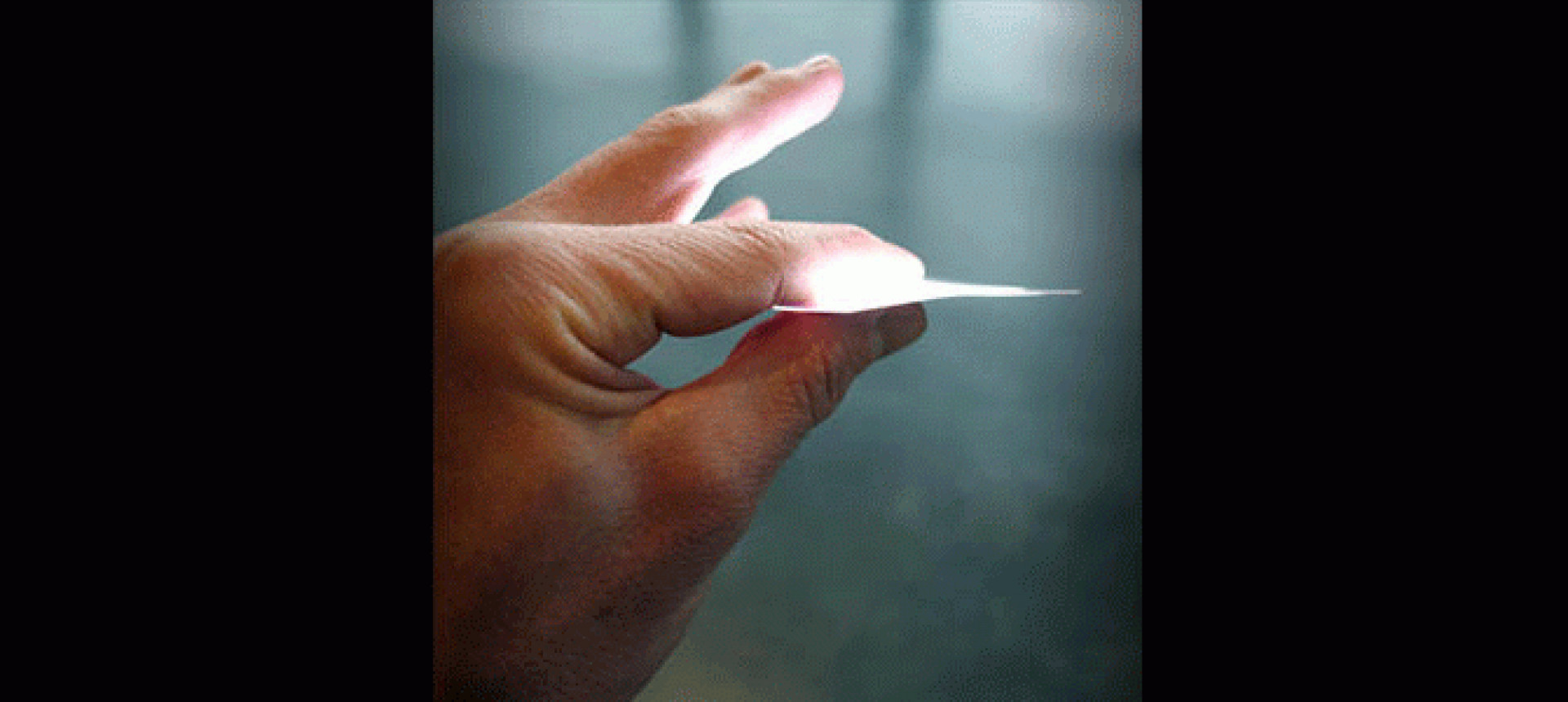
7. Liquid glass – the ultimate protective coating
Spray-on liquid glass is transparent, non-toxic, self-cleaning and can protect virtually any surface against almost any damage from hazards such as water, UV radiation, dirt, heat, and bacterial infections. The coating is also flexible and breathable, which makes it suitable for use on an enormous array of products.
The liquid glass spray consists of an ultrathin layer (15-30 molecules thick) of almost pure silica, extracted from quartz sand to which ethanol or water is added depending on the type of surface to be coated. There are no other additives, and the glass nano-coating bonds to the surface at the molecular level. According to the manufacturers, liquid glass has a long-lasting antibacterial effect because microbes landing on the surface cannot easily divide or replicate. The coating is environmentally harmless and non-toxicthree-dimensional and is easy to clean using only water. It repels bacteria, water and dirt, and resists heat, UV light and even acids.
This product is low cost with such highly beneficial properties that it will not be long before it is applied as a protective coating to the majority of the products you buy and will be used in protecting architectural elements, signage, brand applications and in the conservation of buildings.
8. Designer Nanocrystals – inventing new materials
Three University of Chicago chemistry professors hope that their separate research trajectories will converge to create a new way of assembling what they call ‘designer atoms’ into materials with a broad array of potentially useful properties and functions.
These ‘designer atoms’ would be nanocrystals-crystalline arrays consisting of hundreds of thousands of atoms that can be manipulated in ways that go beyond standard uses of atoms in the periodic table. This is small enough that new quantum phenomena begin to emerge, but large enough to provide convenient ‘modules’ for the design of new materials.
Such arrays would be suited to address challenges in solar energy, quantum computing and the creation of bespoke new designer materials.
But don’t get too excited, it will need a lot more development before you can pick up the new products at your regular material suppliers.
9. Shrilk – a biodegradable alternative to plastic?
Harvard researchers at the Wyss Institute of Biologically Inspired Engineering have combined Chitin, found in the hard outer shells of insects and proteins derived from silk, to produce a new material. The aptly named Shrilk is thin, clear, flexible, and as strong as aluminum at half the weight. It is cheap to produce and has the massive advantage of being 100% bio-degradable with the further advantage that its constituents biodegrade into natural fertilizer completing the total eco cycle.
The inventors of Shrilk say it has a host of possible applications and with development could provide a more environmentally friendly alternative to plastic. It has already been approved by the US Food and Drug Administration and has many potential applications – the most obvious being in packaging. Full advantage can be taken of its low cost, high strength to weight ratio and total biodegradability.
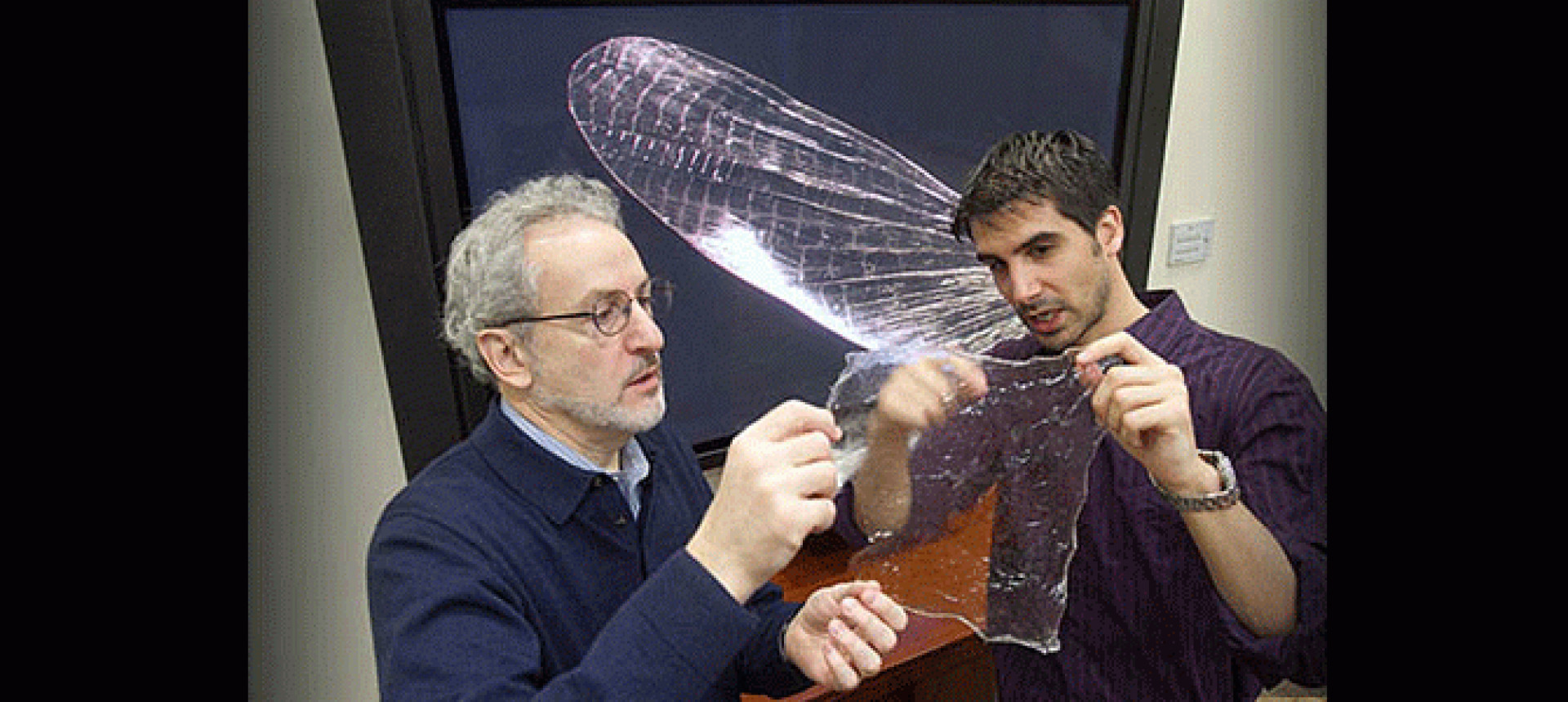
10. Molecular Glue – reducing the need for mechanical fixings
With the help of flesh eating bacteria (streptococcus pyogenes) scientists at Oxford University have developed a superglue that bonds at molecular level. Testing has demonstrated that the bond is so strong that it broke the testing machine.
The product can be tailored to provide selective adhesives giving optimum bonding to a huge variety of materials.
There are incredibly strong bonding agents already commercially available for application in highly controlled conditions in aerospace fabrications but this three-dimensional adhesive once perfected for commercial use will give much greater scope for successfully bonding materials in uncontrolled environments. This will give much greater opportunity to create bonded structure for everyday use without the need for mechanical fixings.
11. ‘Growing’ crystalline metal components – will this ‘sprout’ new building construction?
A new process pioneered by Rolls Royce has developed metal alloys that can be ‘programmed’ to grow to perfect crystalline forms while maintaining very high strength and durability. Rolls Royce already uses this technology to produce high-pressure turbojet engine turbine blades. Each identical blade is grown as a single crystal of alloy in a vacuum furnace. The blade lives in the high-pressure turbine, where the gas temperature is at least 400 degrees above the melting point of the blade’s alloy. It sits in a disc that rotates at more than 10,000 rpm. This means that the force on the blade root is the same as hanging a London double-decker bus from its tip. Every time the plane takes-off this single blade develops the same horsepower as a Formula 1 racing car, and yet it can travel 10 million miles before it needs replacing.
This is amazing technology that can deliver highly complex alloy products that are free of imperfections, super strong and highly durable and can be produced in large quantities of absolutely identical components. All this may one day lead to ‘growing’ much larger structures ultimately perhaps major components of whole buildings.
12. Sensoaesthetic materials and finishes – influencing the design and implementation of experiential environments
This is not new material but it is a research programme at the Institute of Making that is looks into the human physical and psychological responses to materials, finishes, forms and textures in the built environment.
The research findings should prove very interesting and helpful to those of us who design and implement experiential environments. Enabling us to more clearly and rationally develop designs that fully respond to user needs and expectations at all levels.
13. Roll-over 3D printing, 4D printing is where it’s at
Rapid prototyping has grown immensely since the 1980s recently changing its name to 3D printing, it now looks set to change its name again to 4D printing.
3D printing is a method of producing three-dimensional rigid objects from computer files but 4D printing (so named because it has the 4D time factor) has been developed to create objects that can self assemble and or self reconfigure over time. This new technology is already radically changing the way we approach design and manufacturing. For example, the Massachusetts design studio at MIT has designed a dress printed with individual self-assembled components. The printer is capable of printing articulated joints, which allows the piece to change shape and form depending on the wearer but always able to return to its original shape when no longer being worn.
This means the constraints of size and complex assembly will eventually become non-existent as 4D printing enables the manufacture and assembly of both small and large products.
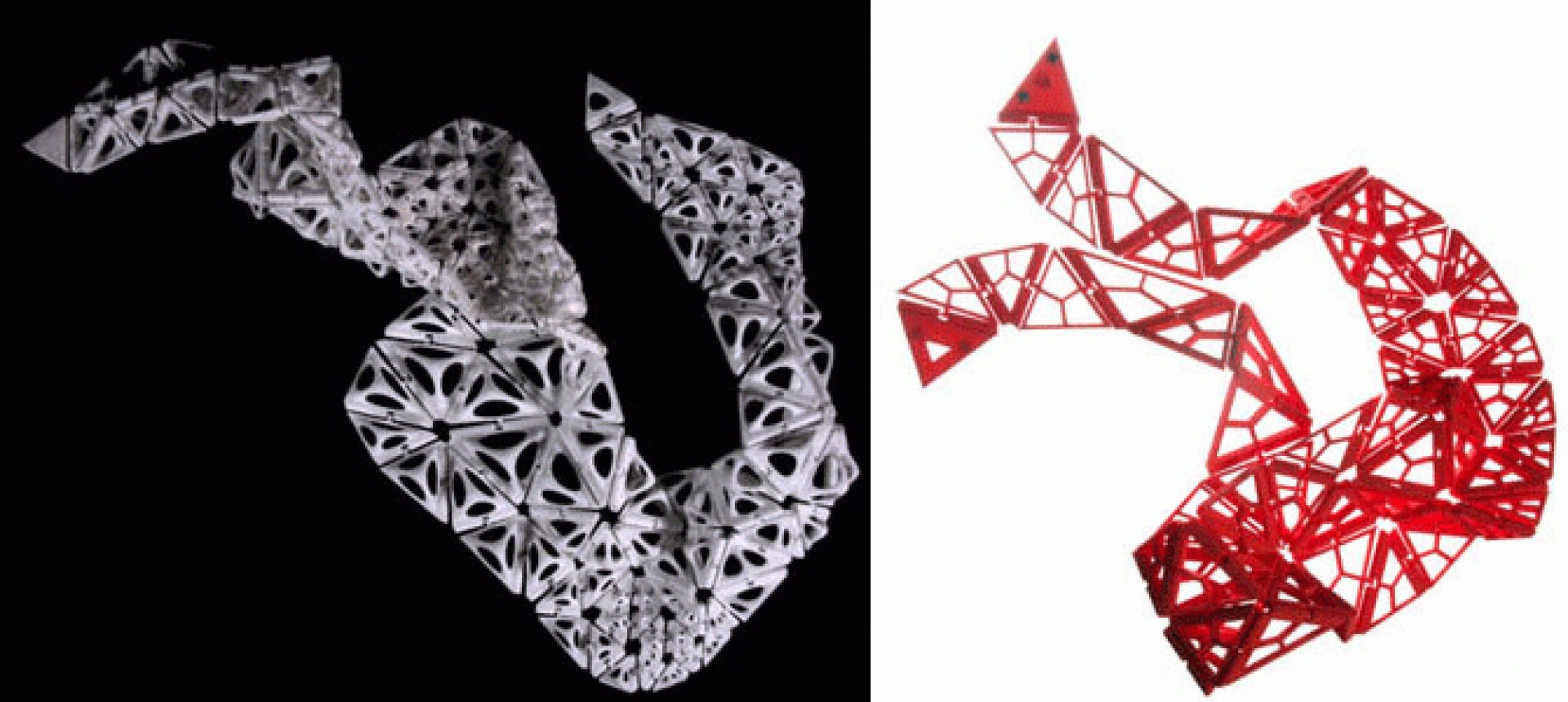
14. Mycellium superfoam – advances in biodegradable packaging
In another first for working with nature Eben Bayer, and Gavin McIntyre have developed an organic foam grown from the interaction between fungal mycelium and organic waste. Their new company ‘Ecovative‘ in New York uses the raw materials to grow packaging and insulation materials in moulds under controlled conditions. The mycelium will fill any shaped mould of any size and produces a very lightweight high impact resistant packaging tailored to specific products from laptops to washing machines. The process takes three to five days and once complete the product is subjected to high-temperature treatment to prevent the mycelium from further development, so producing a totally inert product.
This is a low-cost product, which unlike polystyrene foam packaging, does not waste natural resources and has the further major advantage of being 100% biodegradable.
Ecovative is now undertaking further research into other applications – particularly in buildings creating a ‘Mushroom Tiny House’ to assess the building insulation properties of their product.
15. Nanocellulose – the world’s hottest super-material
This is the big one for 2015. It epitomises the benefits of combining bio-engineering with nanotechnology to produce low-cost material with extraordinary properties and produced from a renewable source.
Although it smartphone in the 1980s, it is only commercially viable now. Nanocellulose is made from wood pulp, a basic material we have used for centuries in papermaking. But this is no paper, it is a very lightweight material that is eight times stronger than stainless steel and surprisingly it is a good conductor of electricity. With such versatile properties, it’s no wonder it has been described as the ‘world’s hottest supermaterial’.
As nanocellulose is transparent, light and strong, it can be used in place of plastics and glass. In fact, Pioneer Electronics are experimenting with nanocellulose to make some of the most insanely thin and flexible screens for the future.
This product has so many brilliant attributes that to list all its potential applications would take forever. Those most relevant to us in the design industry include:
- Flexible batteries
- Lightweight mouldable sheet products to make everything from furniture to yacht hulls. In fact, the Ford Motor Company is so interested in this material that they are considering using it to construct the cars of the future. They estimate that not only will they be stronger but the average family car would be 340kg lighter than steel construction, and therefore much more fuel efficient.
- Biofuel as a by-product. Because the process of manufacture uses algae to process the wood pulp, it is theoretically possible that the algae DNA can be adjusted to create biofuel as a by-product. Just the efficiency we need in a world of depleting resources!
All this and it's 100% biodegradable too – this really is a wonder material that will change the way we manufacture in the future. Its possibilities will only be limited by our imagination.
It is refreshing to see so many amazing materials being inspired by and developed from nature and the collaboration between bio-engineers and nanotechnologists. It will be exciting to see how the use of these materials develops and their contribution to the built environment. Makes you wonder what amazing new products and materials are waiting to be discovered in 2016. Meanwhile, make the most of the opportunities presented by these new materials in your future design and product development.
